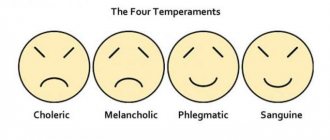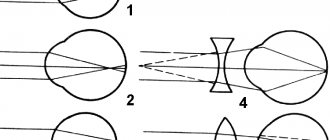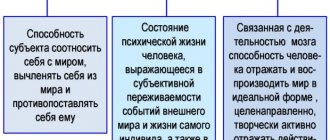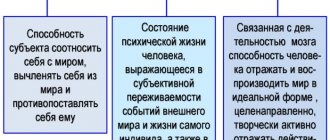Reactivity is one of the main properties of temperament. A person’s behavior in various situations depends on this quality. How do you make decisions: spontaneously, based on emotions, or after careful consideration? The answer to this question will show how developed your reactivity is and whether you can cope with unforeseen situations.
Temperament as perceived by philosophers and scientists of antiquity
Even ancient philosophers argued that a person has a number of characteristics given to him at birth, which are subsequently formed into a set of traits or so-called character. It is impossible to significantly change these features; they can only be easily adjusted under the influence of society and education.
Scientists of that time could not imagine what temperament or character depended on, but they made attempts to substantiate their numerous theories in proportion to knowledge in medicine and psychology. The founder of the typology of temperaments was Hippocrates; he was the first to define each of the types that are still used today. But the famous doctor explained temperament by the predominance of one or another liquid in the human body.
Years later, European scientists tried to put forward their own typology based on the physical characteristics of people. This version was subject to much criticism in the scientific world and is now practically not used.
Temperament through the eyes of Hippocrates and Claudius Galen
Hippocrates defined personality temperaments, and his student and follower Claudius Galen wrote a large scientific treatise, where he described each type in detail and detail, specifying the liquid that is contained in the maximum quantity in human organs.
Based on Galen's theory, there were the following types of human temperament:
- sanguine - this person had a large amount of blood, which influenced his actions and emotions;
- phlegmatic - he was the result of the predominance of phlegm;
- choleric - had increased bile content;
- melancholic - suffered from an abundance of black bile in the body, corroding his internal organs.
Almost until the eighteenth century, this theory was perceived as the only correct one. And only the hard work of modern scientists dispelled the fantastic assumptions of Hippocrates, although the names and characteristics of temperaments have remained unchanged and are actively used.
What did ancient scientists and philosophers think about temperament?
Philosophers and ancient scientists believed that at birth a person receives a set of qualities that determines his future life. It is not possible to completely change qualities. However, they are easy to correct using social influence or education.
First, Hippocrates, and after his student Claudius Gallen, identified and described 4 types of temperament. They differed from each other in the content of special substances in the body:
- Sanguine. There is a lot of blood in the body, the high content of which determines its actions.
- Phlegmatic person. This type of temperament is due to the presence of phlegm.
- Choleric. There is too much bile in the body of such people.
- Melancholic. Filled with black bile, which gradually eats from the inside.
Until the 18th century, this theory was considered the only correct one. In the 21st century, the names of temperament types have remained the same. But the description has changed.
Division into temperaments in modern psychology
Academician Pavlov made a great contribution to the development of psychology. As a result of research, he found out that a person from birth has his own type of nervous system, which determines his behavior. Moreover, this theory is equally effective for animals and people. Subsequently, Pavlov’s research became the basis for the work of Soviet and European psychologists. As a result, a scientifically based typology of human temperaments emerged:
- Sanguine. People of this temperament easily adapt to new conditions, are active and efficient. Most of them are friendly and have high communication skills. They are sensitive to the mood of others and are extroverts.
- Choleric. This temperament characterizes irritable and hot-tempered people. They get distracted from their work very quickly and find it difficult to concentrate. The expression of emotions in choleric people is violent and short-lived; they can also be considered extroverts.
- Phlegmatic person. Such people are very efficient, but it is difficult to switch from one thing to another. They are little emotional and are able to remain calm in any situation. All their movements are slightly slowed down, the same goes for facial expressions. Phlegmatic people are classified as introverts.
- Melancholic. Melancholic people are very sensitive, but not too active. They are touchy, but timid and inhibited. Such people have low productivity and have difficulty meeting new people. The slightest trouble causes violent emotions in them, paralyzing any activity.
To determine a person's temperament, it is necessary to consider him in relation to a number of properties. Psychology has a productive system that allows you to analyze the type of nervous system and classify it.
Main types of temperament
Today in psychology the system of temperaments developed by Academician Pavlov is used. He found out that each person has a special nervous system. She determines how he will behave. Interestingly, the theory applies to humans and animals.
So, according to Pavlov, the description of temperaments looks like this:
- Sanguines. They quickly find a common language with different people. They do not tolerate monotony. Change jobs easily. They speak loudly, actively gesticulating. Has an unstable emotional state. People with this type of temperament develop feelings quickly. But they pass just as quickly.
- Phlegmatic people. They are characterized by slowness, balance, slowness, and calmness. They do not express feelings, they communicate smoothly with others. They have a stable mood. Phlegmatic people cannot be enraged or emotionally hurt.
- Cholerics. They are known for their tendency to hasty speech, excessive mobility, bright facial expressions and gestures. The mood of representatives of this type of temperament changes instantly. They are unbalanced, unrestrained, and do not know how to objectively assess people and the situation around them.
- Melancholic people. They are characterized by a slow course of mental processes. They are passive, not interested in the life around them, withdrawn and often lonely. Feelings in such people develop slowly. However, they differ in depth.
It is noteworthy that in psychology there are no 100% sanguine people or, for example, choleric people. Usually the temperaments are mixed.
Interesting! “A melancholic person will take for a tragedy what a sanguine person will see only as an interesting incident, and a phlegmatic person will see as something not worthy of attention” - Arthur Schopenhauer.
Basic properties of temperament
Defining temperament is impossible without eight aspects that characterize it:
- sensitivity;
- activity;
- ratio of reactivity and activity;
- plasticity and rigidity;
- reaction rate;
- emotional excitability;
- extroversion or introversion.
An experienced psychologist assesses the personality for each aspect and determines the type of temperament. The most important parameters are considered to be reactivity and activity. It’s worth talking about them in more detail.
Reactivity in psychology: definition
It is difficult to say when psychology became a serious science and began to consider a person’s personality taking into account all aspects of temperament. But the scientific community believes that Wolf Solomonovich Merlin was the first to introduce such a concept as reactivity in psychology. This gave impetus to further research into the psycho-emotional differences of individuals, which eventually resulted in a fundamental scientific theory.
At the moment, it can be argued that reactivity in psychology is the uncontrolled reactions of an individual to any stimuli of an external and internal nature. The intensity and duration of these reactions largely determine a person’s temperament. Subsequently, psychologists came to the conclusion that emotional reactivity is responsible for performance and productivity. In psychology, this has acquired particular importance; many large corporations in the West use the concept of reactivity when selecting new personnel.
Reactivity and speed of decision making: is there a relationship?
Based on the results of numerous studies and tests, psychologists have found that the speed of decision-making and reactions to various life situations depends on reactivity.
People with high reactivity often make decisions under the influence of emotions and the moment; many of their conclusions and reactions are incorrect. But in a critical situation, they can save the life of not only one person, but also many others. The same cannot be said about individuals with low reactivity. They think about every decision for a long time and are not able to make it at a specific moment under the influence of stimuli from the outside world.
Classification
Reactivity is a person’s response to external or internal stimuli. Psychology distinguishes between group, species and individual reactivity. The species property is inherent in animals and does not affect people. The group form of manifestation expresses the general behavior of individuals with similar characteristics.
Individual reactivity is based on the acquired and innate qualities of a particular individual. It is determined by age, gender and type of nervous activity. This form depends on external environmental factors.
There are also physiological and pathological reactivity. The first is considered a normal reaction of a healthy person to a stimulus, and the second is a nonspecific response to a stimulus.
Emotional
Emotional reactivity is characterized by the strength of its manifestation. This property is expressed in a person’s ability to experience emotions and feelings. This type is due to both innate qualities and upbringing conditions.
Reactivity of the emotional type is manifested in selectivity - in what stimuli an acute reaction occurs. This can happen in both a positive and negative way. A person with a high level of reactivity may be very worried about the failures or rudeness of others, but also experience bright positive emotions from travel, concerts, and festivals.
A low level of reactivity of this type is considered an unfavorable factor. People with these characteristics are more irritable, emotionally unstable, indecisive and uncommunicative. In adulthood, they are more likely to experience neurotic manifestations.
Situational
Situational reactivity is expressed in the state of an individual at a specific moment, which is characterized by subjective experiences. Such emotional manifestations are tension, anxiety, nervousness in relation to a certain situation. In addition, situational reactivity occurs in response to extreme or stressful conditions.
Field
Field reactivity is manifested in the decision of basic adaptation to external influences. The meaning of the property is to organize the pre-tuning of the body for active interaction with the environment. This form of contact is limited to a specific situation, consumes little energy, but is suitable for solving a small range of problems. The body responds only to the intensity of external stimuli, and not to their quality.
This type of reactivity is a primitive regulatory mechanism, but it provides a person with safety and emotional comfort in the environment. The property is distinguished by the fact that it helps in stabilizing mental balance. Field reactivity is involved in assessing the dynamics of the intensity of external manifestations: movement, changes in relationships in the surrounding space.
Social
Social reactivity refers to the response actions and behavior that a person exhibits when necessary to solve specific social problems. This property is reflected in the form of a weak awareness of the conditions and goals of the situation, the predominance of external motives, and the lack of inclusion of the “I” in the process. As a result, the person does not take responsibility or takes it formally, which is reflected in low independence.
The manifestation of reactivity depends on the value of the social task, its acceptance, and the involvement of the individual in its resolution. The social form manifests itself in impulsiveness or passivity.
Formula for Reaction Intensity in Emotional Reactivity
Since reactivity in psychology is a reaction to an external stimulus, it would be natural to assume that it has a certain strength. In the modern world, there is even a formula according to which you can determine the degree and intensity of the reaction.
In people with low reactivity, intensity is in direct interaction with the strength of the impact. The more pressure you put on such a person, the more intense his reaction.
Otherwise, everything happens to people who are easily excitable. The intensity of their reaction is absolutely independent of the strength of the impact. Even slight pressure triggers an intense reaction in the individual. This makes highly reactive people unpredictable and difficult to manage.
Definition of what it is
Reactivity in psychology is an unpleasant state that occurs in response to lack of freedom. Initially, the concept of temperament was considered by Hippocrates and his student C. Gallen. They said that there are some innate character traits and behavior of people that cannot be changed or adjusted.
Scientists have developed a theory based on the predominance of fluids in the body:
- sanguine people - blood;
- phlegmatic people – mucus;
- choleric people – yellow bile;
- melancholics – black bile.
These characteristics were considered unchanged until the 20th century, but with the development of science, the description of temperament types expanded.
I. Pavlov supplemented the teaching based on the characteristics of the nervous system:
- A sanguine person is a person with loud, emotional speech. Not afraid of change, characterized by a positive mood, not prone to despondency and sadness.
- Phlegmatic is a calm and balanced type. Does not express feelings and has a stable mood. They are difficult to provoke and are difficult to anger.
- Choleric is a hot-tempered, unrestrained person. Reacts sharply to stimuli, but moves away easily.
- Melancholic - mental processes in this type proceed slowly. These are passive, withdrawn people. Characterized by the depth of experience.
Despite the descriptions, there are no people who completely fit one of the types. Usually human behavior is based on the predominance of one of them. Further research into temperament showed that this phenomenon has its own characteristics.
Reactivity in psychology
| Property | Description |
| Reactivity | The basis of temperament, determines the reaction to external stimuli |
| Sensitivity | Sensitivity to external factors |
| Plasticity-rigidity | The ability of the psyche to adapt to changing conditions |
| Introversion-extroversion | Focusing attention on the internal or external world |
| Excitability | Emotional reaction to stimuli |
| Reaction rate | Reaction speed in response to external influences |
J.W. Brehm conducted a study in 1981 in which he discovered the manifestation of reactivity through showing children accessible and inaccessible objects. As a result, it turned out that children deeply experience the fact that they cannot get something.
In his work, P. Silvia wrote that when reactivity is shown, it is necessary to provide a message that will create the appearance of the proposed situation as threatening. This way you can reduce the negative effect of the event.
K. Miller and his colleagues in 2006 proposed the concept that reactivity influences adolescent behavior. Smoking and other addictions of this age arise as a response to the prohibitions and instructions of adults.
Reactivity in psychology: examples of manifestation in everyday life
In order to have a complete understanding of reactivity, let's give a simple real-life example. Let's say you're dreaming of a vacation after a hard year of work. Your friends are also going to relax, but one goes to the mountains, and the other dreams of a lazy beach holiday in a warm country. Both of them invite you to come with them, but after much deliberation you decide to go on a trip to the sea and the sun. At that moment, when you are ready to voice your decision to a friend, he begins to argue that you must go with him and have no right to do otherwise. This is where your reactivity matters a lot. What will you do? Will you begin to resist the pressure and abandon your already planned and much-desired vacation on the beach, going to the mountains as a protest? Or stick to the original plan, no matter the pressure put on you?
People who are capable of doing harm to themselves are characterized by increased reactivity and often draw the wrong conclusions from the situation. Moreover, the opponent’s personality does not play a role in making a decision; it can be a close friend or a stranger. A tendency to make hasty and incorrect decisions is revealed in those people who have increased reactivity. In psychology, this is considered to be a constant, which is used as a starting point in determining a person’s temperament.
How it manifests itself
Reactivity in psychology is a person’s reaction to actions or rules that limit freedom. The theory of property is based on the fact that every person can exercise freedom and act according to it. Expressing free behavior requires the psychological and physical ability to take responsibility for one's actions.
Reactivity manifests itself according to the following scheme:
- feeling of freedom;
- restriction of freedom;
- manifestation of resistance;
- restoration of freedom.
Freedom here is understood as an internal feeling of many options for behavior, actions, emotions, and relationships. Behavior is considered free if the individual fully exhibits it or expects its implementation in the future. Any situation that interferes with the exercise of freedom is a danger.
Free choice of when and how to behave and awareness of the degree of personal freedom influence the appearance of reactivity. A threatening situation is seen as a challenge, a signal to action. Fear of losing independence leads to attempts to regain it by overcoming obstacles and resisting external stimuli.
Reactivity has several characteristics:
- This property is used in manipulative actions, initially offering options that must be called “undesirable” for the subsequent selection of “desirables”.
- Reactivity changes the results of psychological experiments. This is called the Hawthorne effect. It means that when people are aware of surveillance, they stop behaving naturally.
- The greater the significance of the event, the stronger and more emotional the reaction.
- Also, if the significance of the situation is imposed from the outside, then the resistance will be stronger.
- Under any circumstances, a person will expect the restoration of freedom.
- Reactivity is used in reverse psychology to interfere with rational decision making.
- The property is characterized as emotional, not rational, as it arises at lightning speed, without thinking.
Sometimes situations arise that show the impossibility of exercising freedom and represent its deprivation. Reactivity as a property of temperament should manifest itself only initially. When realizing the hopelessness of the situation, the feeling of resistance subsides.
Some threatening events cause only minor difficulties, while others completely destroy the opportunity to exercise independence. Reactivity has the effect of restoring freedom that is in danger. But such attempts are weakened by opposing forces.
As the pressure to conform increases, resistance and motivation through the surrender of one's own will will increase. There will also be events where there is an opportunity to restore freedom, but the costs of implementing the effort are too high to weaken the opposition. Both of these forces reduce or make impossible the very attempts to restore independence.
In everyday life, reactivity is used in marketing. For example, sales are always relevant because the products on offer seem more needed in times of shortage. A similar principle works in raising children. When parents say that a child is too young to try a particular product, the child becomes excited about trying to get it.
In literature, the reactivity effect is well described by the story of Tom Sawyer, who convinced his friends that they really wanted to paint the fence instead of going to the river. The property is also shown in the play Romeo and Juliet. The ban on communication and social restrictions make a partner more desirable, as they act through a threat to the freedom of the main characters of the work.
Reactivity and activity: features of the relationship
It has long been proven that the productivity of any human activity is determined by the ratio of reactivity and activity. In psychology, this was expressed in several formulas that emerged as a result of special and lengthy research. Highly reactive individuals have little activity, since they cannot work with concentration and are constantly distracted by the slightest external stimuli. In addition, this type is also affected by internal stimuli - thoughts, emotions, memories. All this significantly reduces labor productivity.
Individuals with low reactivity usually have the highest activity. They are able to solve one problem until a result is achieved, without being distracted by anything in the world around them. Such people are able to work for weeks and months until they get what they want. Scientists who have given the world great discoveries are often classified as this type.
The psychological reactions of many people cannot be controlled, but with certain knowledge, it is possible to predict a person’s behavior and draw conclusions about his capabilities on the way to the top of his career.










